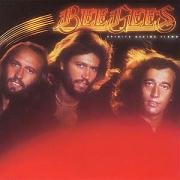
Tie-dye is a chemical process applied to shirts, vestments and sometimes pants. In tie-dye, segments of a garment are constricted with rubber bands or other binding, ribbon-type apparatuses. The garment is then dipped into a vat or series of vats filled with reactive color dye. When removed and allowed to dry, the resultant garment is colorfully patterned, signifying the astral ambitions of the wearer's mentality and/or spirituality. When worn by urbanite men, tie-dyed clothing is also a failsafe tool for promoting sexual abstinence.
As with many popular chemical processes, tie-dye was originally developed for military use, specifically in covert operations against renegade guerillas in Latin America. These actions were never reported in the mainstream press, but the Museum was able to obtain a recorded transcript of one such skirmish through the Freedom Of Information Act. The records do not state the specific country involved, but acoustic experts familiar with the tape assert that a very low-frequency buzz indicates the presence of puss caterpillars, which strongly suggest the confrontation took place in Bolivia:
CHE GUAVARA: All right, I'm missing my cigars. Somebody 'fess up.
UNKNOWN ASSOCIATE #1: I thought you quit.
CHE GUAVARA: What makes you think I quit?
UNKNOWN ASSOCIATE #1: Didn't you say something about how self-denial of luxury was important to the revolution, how it aligns us with the peasantry?
CHE GUAVARA: Why would I say something like that? Geez, you make me sound like a stick in the mud!
UNKNOWN ASSOCIATE #2: I think I heard you say it too, Che.
CHE GUAVARA: Come on, people! What have you been smoking? My cigars, perhaps?
UNKNOWN ASSOCIATE #2: Look, man, why don't you just have a
cigarette? Here.CHE GUAVARA: I don't do cigarettes, man! C'mon, you've known me all these years. Fidel gave me those cigars. It was a very important symbolic gesture. If you wanted one you just had to ask.
UNKNOWN ASSOCIATE #3: Why you getting so uptight about symbolic gestures? I thought we were men of meaningful action, not square dancers!
CHE GUAVARA: Look, it's a simple pleasure, okay? A little taste. It's not what I'd call total slobbering luxury. I'm not sitting here waving my caviar spoon in the air in a silk suit bellowing at the waiter to bring me an expensive cigar. I'm just on my cot, layin' back, thinkin' about things, revolution, et cetera et cetera et cetera, and I just got in the mood for a good cigar. Not every little common gesture I make has to have some Maoist extrapolation to it – I mean, geez, perspective, guys.
UNKNOWN ASSOCIATE #2: Have you looked in your smoking jacket?
CHE GUAVARA: Ah! Damn, you're right, totally forgot… yep, there they are. Anybody got a…
(sound of door bursting open)
CIA OPERATIVE #1: CIA! Freeze, commie! Don't move!
CHE GUAVARA: … Oh, my God… what in God's name are you wearing?
CIA OPERATIVE #2: You like it, huh?
CHE GUAVARA: I don't so much like it as… I'm mesmerized by the… the…
CIA OPERATIVE #1: It's called freedom, motherfucker! Good ole American freedom! This shirt means I'm free!
CHE GUAVARA: That has got to be the ugliest shirt I've ever seen. Is that agency-issue? God, it's like a trainwreck, I can't look away, I…
CIA OPERATIVE #2: Got 'im. Fire away, Rainbow.
CIA OPERATIVE #1: You got it, Love Gravy.
(gunshots)
The hippie population of the San Francisco Bay Area, thriving on irony as they did, adopted the CIA's new uniform as one of their own, effectively demystifying the military's aggressive use of tie-dye. Soon it was the costume of the psychedelic rock movement of the late '60s. Although tie-dye became ubiquitous in the community, it often incurred derision and dismissal from the upper echelon of high fashion correspondents.
The famous fashion commentator Mr. Blackwell, in fact, published these comments about tie-dye wearers in a few of his annual Worst Dressed Lists between 1966 and 1972:
Grace Slick. Heavens to Kerouac, this is a psychedelic disaster! You don't need to go ask Alice to why this tie-dye is a no-go -- divine Grace will show you herself! This appalling multi-colored smock makes her look like a Martian control panel! If she really wants somebody to love, then she should try not to look like an unattended mold culture in the Haight-Ashbury Free Clinic! This is one Airplane Mr. Jefferson doesn't want to board! I'd like to smother whoever designed this rag with a Surrealistic Pillow!
Jerry Garcia. Frankly, the sight of Mr. Garcia's tie-dyed vest is so horrible, I think I'll be grateful when I'm dead too! This unflattering garment looks like a family-size serving of pasta primavera after Mickey Hart and Pigpen have sat in it! This blobby, blubbering, bulbous and bulky blight has less form and purpose than a 45-minute guitar solo! Only a friend of the devil would wear such a dastardly disaster, and I think even The Dark One would rip it apart with a pitchfork! This is not exactly an American Beauty – more like an Aztecan Hag! Word to the wise, Deadheads: LSD does not stand for "Let's Stop Dressing!"
Country Joe McDonald. This Fish stinks! A revolting tie-dye button-down with a matching cowboy hat that should have stayed in Vietnam! Mr. McDonald should have burned this outfit instead of his draft card! He has clearly scraped the bottom of the bong for this contraption! If Mr. McDonald were in fashion school, he would just as well be asking his instructor to "Gimme an F!" Whoopee – we're all gonna dye? Count me out, peace-monger! Classify this draft dodger I-Y – for "intensely yucky!"
 |
| Fig. 1: Grateful Dead tie-dye shorts, originally marketed with the unfortunate tagline "Show her where your head is at!" |























